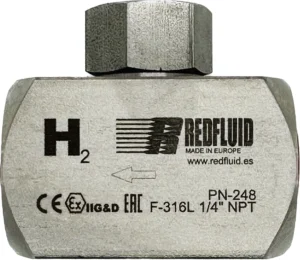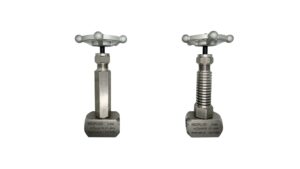
Hydrogen Check Valves
Imagine installing just any check valve in a hydrogen circuit. At first, everything seems to work fine — but over time, internal materials begin to
If we know a little English, I don’t think it would be hard for us to know what Fire Safe means, right?
And if you add the word valve in front of these words, I think it is pretty understandable. But just in case, I’ll define it for you in the blink of an eye:
Fire Safe valves are valves of different types that are generally installed in piping systems where the process fluid(s) represent a potential fire hazard to ensure a safe and reliable shut-off in case of fire.
To do so, they must be certified under the standards corresponding to the so-called Fire Tests.
Among the most relevant standards are:
The term fire-safe refers to the ability of a valve to minimize the loss or leakage of process fluid to the outlet or atmosphere after being exposed to a fire test. In other words, by design, fire-safe valves are able to withstand a fire without losing their functionality entirely or creating a safety problem for people or the environment due to leakage of process fluid.
Fire tests for these valves are based on a basic theory. They must withstand at least 30 minutes. This is the maximum time to control fire without structural damage, pipe collapse, and other irreversible damage that can increase the size of the problem.
In other words, the valve is exposed to a controlled fire for 30 minutes to see how it performs. The valve will be certified if it maintains the minimum functionality required by the tested standard.
At Redfluid we manufacture needle valves of different types, for lines from 1/8 to 4″ diameter and pressures up to 2200 bar including fire-safe needle valves. All Redfluid needle valves are certified under the corresponding norms and standards for their function. Learn more about Redfluid needle valves here.
Obviously, at Redfluid we manufacture Fire Safe ball valves and many other types of ball valves. Of course, all ball valves at Redfluid are tested and certified according to the relevant standards, such as API 607 and ISO 10497. If you are a valve freak visit our Redfluid ball valves page.
Fire Safe certification and ATEX certification for valves are obtained from two standards. They exist to ensure the safe operation of valves in installations exposed to hazardous environments.
Fire Safe certification is obtained from the safety standards used for valves in potentially explosive atmospheres. These are developed by the American Petroleum Institute (API) and adopted by many other countries. This certification is achieved by passing the tests established by standards such as API607, API6FA, 6FB, and 6FD. Another standard that applies, in this case, is ISO10497. It is important to note that, although based on the same principle described above, these standards are different. API 607 provides guidelines for quarter-turn valves, such as ball valves, and other valves that do not have metal seats when under pressure. In contrast, API 6FA focuses on fire tests for valves of API 6A and API 6D design with metal seating.
ATEX certification is obtained from the safety standard developed by the European Commission. It focuses primarily on the prevention of explosions caused by dust particles in areas with hazardous atmospheres, such as mines and factories. The standard requires that all parts of a valve be designed to prevent the ignition from occurring due to the buildup of static electricity or hot surfaces coming into contact with combustible dust particles present in the surrounding atmosphere. For this purpose, the valves must be constructed of approved materials. In addition, they must be properly grounded and capable of containing sparks generated by friction between parts when opening and closing the valve. The tests performed for this certification are described in the ISO10497 standard.
Hey, and if you need anything else or have any doubts, contact us. That’s what we are here for.
Share this post

Imagine installing just any check valve in a hydrogen circuit. At first, everything seems to work fine — but over time, internal materials begin to

You’ve probably heard about high-temperature or cryogenic valves, the ones that are incredibly resistant because they operate under extreme conditions. But what makes them so
This website uses cookies so that we can provide you with the best user experience possible. Cookie information is stored in your browser and performs functions such as recognising you when you return to our website and helping our team to understand which sections of the website you find most interesting and useful.
Strictly Necessary Cookie should be enabled at all times so that we can save your preferences for cookie settings.
If you disable this cookie, we will not be able to save your preferences. This means that every time you visit this website you will need to enable or disable cookies again.
Esta web utiliza Google Analytics para recopilar información anónima tal como el número de visitantes del sitio, o las páginas más populares.
Dejar esta cookie activa nos permite mejorar nuestra web.
Please enable Strictly Necessary Cookies first so that we can save your preferences!